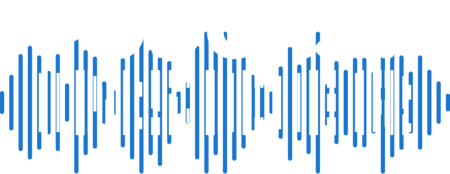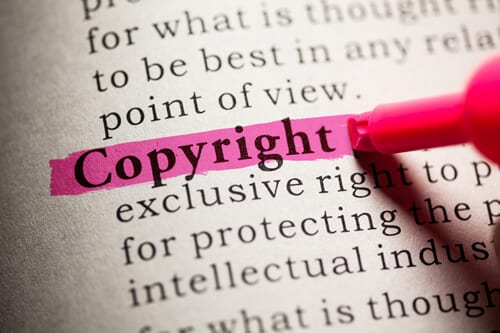John pulls his microphone to the center of the desk and prepares to begin his weekly podcast, “Ooze News.” After opening the list of news articles he assembled from his main source, the New York Times, John begins reading and recording the articles verbatim into his podcast. John finishes his podcast by telling his listeners that he hopes they enjoyed this week’s top news stories from the Times.
Anna has a podcast called the “Groove News,” a weekly podcast that, like John’s, uses various articles from the New York Times as sources. Anna assembles her list of articles and begins discussing each article and inserting her analysis, comments and opinions, using enough of each article to give context for her analysis, comments and opinions. Anna then compares each Time’s article with similar news stories written by other news sources and highlights how each news source treats the “facts” in each article differently. Anna uses these differences to support or highlight her analysis.
Which podcast is using the concept of “Fair Use” within the realm of copyright law? If your answer is that Anna’s podcast comes closest to the definition of “Fair Use,” then you are correct. But the real question here is: why is Anna’s podcast “Fair Use” and John’s is not? The answer is not easy and not simply defined.
It’s obvious that we cannot take something someone else has created and treat it as our own in our podcasts. But there are legitimate situations when we can include another person’s work in a podcast. Those situations fall under the broad category in copyright law called “Fair Use.” This is an area of the law where two equally important concepts clash head on: free speech and property rights.
If I create something, it is my property and I control its use – therefore, you cannot take it, free of charge and without permission, for your own use. However, as a citizen of the United States I have a very broad right of free speech so I can say just about anything I want in my podcast. So, if I have the right of free speech, how can a someone use the power of the government to stop me, as in John’s podcast, from reading news articles in my podcast? Within the answer to that question lies the concept of “Fair Use.”
“Fair Use” is not easily defined because it lives within the enormous grey area between free speech and property rights. It usually takes the final word from a court to tell us what “Fair Use” is in specific situations. But there are five general rules we can apply that will give us a reasonable assessment as to whether or not we can use the creative work of another person, without getting permission or paying for it, in our podcast. Here are three factors that are particularly relevant in the case of John and Anna’s podcasts:
- Transformative Use. A primary test is whether or not you transform another person’s creative work and make it into something of your own creative work. In the example of John and Anna, John simply read the news stories from the New York Times and did nothing else; there was nothing creative added in John’s podcast. However, in Anna’s podcast, Anna took pieces of news stories and added her comments, opinions and comparisons. Anna was transforming the various news articles into her own work by what she was adding.
- Amount and Substantiality: Another factor determining “Fair Use” relates to the amount of the news story used in Anna’s podcast. Anna used just enough of the news story to support her opinions, comments and analysis. However, Anna could have used the entire news story, if that was required to make her point. In contrast, John would have been no better off in claiming “Fair Use” by simply declaring before reading each news story, “this article sucks,” or “this article is right on.” In this example, John’s comments relate to the whole news article, but the comments do little to transform the work, as required in factor 1.
- Purpose and Character of the Work: Copyright law tilts in the direction of “Fair Use” if you are using another person’s work for educational purposes, news reporting, commentary, research and scholarship. The words, “tilts in the direction of ‘Fair Use’ used in the previous sentence are not used lightly. The courts, when analyzing a “Fair Use” claim, consider and balance all five factors when making their decision.
Above I’ve discussed three of the five factors used to determine “Fair Use.” The two remaining factors not discussed are: “The Effect of the Use on the Potential Market For or Value of the Source Work,” and “The Nature of the Original Work.” Those two factors didn’t carry as much weight in my balancing test when looking at John and Anna’s podcasts. Please take a look at the University of Minnesota’s website at https://www.lib.umn.edu/copyright/fairuse if you want to dip deeper into “Fair Use.” In addition to containing good information about the basics of “Fair Use,” the website has a nifty interactive tool to analyze your content to determine if you are a fair user. But, as always, the best resource to use to review your content for potential copyright problems is an attorney familiar with copyright law.
One more important thing: You own the copyright for the podcasts you produce. Never treat your ownership rights lightly and give away the rights to your show. It was a common practice in the early days of podcasting for podcast service providers to claim ownership to your show’s rights when you signed up for their services. This practice is no longer prevalent but seems to crop up occasionally. Always read the user agreements before you sign up with a podcasting service. This simple act will protect your rights and save you from major problems.
Now go podcast and have fun!
 -Attorney Barry Kantz is General Counsel and CFO of RawVoice and Blubrry. He can be found on Twitter @kantzb.
-Attorney Barry Kantz is General Counsel and CFO of RawVoice and Blubrry. He can be found on Twitter @kantzb.
This post is part of a series on copyright law as it pertains to podcasters. Check out Barry’s post on using music for your podcast without breaking copyright law.






